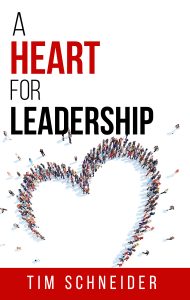We hire smart people. We trust people with lots of stuff, in some cases, millions of dollars of transactions. We love to throw out words like empowerment and transparency and genuineness.
But when it comes to information, some organizations fail to trust that people can disseminate or handle the truth. Veils of secrecy cover the comings and goings of team members, plans for growth, new systems and critical organizational changes. Politely worded press releases take the place of honest and genuine communication with team members and the public. Legal advice that is designed to eliminate any risk trumps real transparency. The human resource function tells us we can’t say why someone is mysteriously gone. A bevy of people in many companies like to play Hungry Hungry Hippo with the real story.
Transparency is the golden egg of organizational trust and team member engagement. Conversely, lack of transparency is an extreme morale killer and gossip starter. Some symptoms to look for in an unhealthy environment include:
- Lots of closed-door meetings.
- Way too much whispered conversations and huddling of leaders with no explanation.
- Silly explanations for people leaving (i.e. “Bob is pursuing new interests”)
- Unexpected and unannounced hiring and new jobs just popping up.
- Press coverage of events that surprise team members.
- Branding and marketing shifts that are unannounced.
- Total lack of any organizational or senior leader communication or visibility.
- Communication that is only weighted to highlight the good and never a discussion of issues or challenges.
- Over-reliance on legal advice to avoid any risk.
- Creation of insiders that tend to know things that the rest of a team does not know or is not privy to.
- Rampant gossip and rumors about people and the organization.
- Answering direct questions with avoidance and obfuscation.
The correlation between organizational (and leadership) transparency and team member engagement and overall performance is undeniable, heavily documented and irrefutable. Quite simply, the best organizations are transparent. The best leaders are transparent within set boundaries and they often challenge those boundaries. Transparent organizations perform better, have less gossip and rumors, have more engaged team members and trust their senior leaders on matters of strategic direction.
To build greater degrees of organizational and leadership transparency, work on the following:
- Challenge why a piece of information supposedly can’t be shared. Trust your team members with information and hold them accountable for improper disclosure.
- Communicate openly and with high frequency. Regular updates and newsletters are a good start.
- Seek input from team members during challenges and when issues arise.
- Share plans and planning processes with team members. Include them on strategic discussions and solicit their input on directional changes.
- Share all press releases with team members concurrently or before it hits the news.
- Share all current marketing and branding efforts before it becomes public.
- Avoid closed door meetings and discussions (unless laughter and fun are too loud).
- Eliminate creating insider information and sharing with a select few. If you can share with one, you can share with all.
- Kill gossip in its tracks. Create a bright line about rumors about the company or people and rebuff attempts to share it with you. Participation equates to endorsement, especially in a leadership position.
- Don’t tell part of a story or create a tease point. If you can’t relay all of the information, don’t share any of it.








